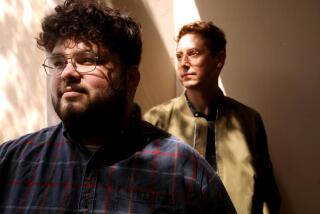A Good Orphanage Is Better Than Bad Foster Care
In August 1994, I attended a homecoming in North Carolina to collect remembrances for the last chapter of my new book. I spent a weekend with 500 of my fellow former orphans and their families, reveling in the good memories we have of our childhoods at the Barium Springs Home for Children. With our group, the supposedly unbreakable cycles of poverty, abuse and neglect had clearly been broken.
That fall, I heard the presidentâs wife remark glibly that any proposal to bring back orphanages was âunbelievable and absurd.â Child-care professionals from across the country chimed in, trashing once again the way I and thousands of adult Americans grew up. Supposedly, we were all irreparably damaged by our orphanage experience.
Orphanage opponents like the first lady clearly had never been to a homecoming like mine. But canât they see that despite all the current talk about family values, some families value very little, especially the children in their midst? Have they considered that orphans in general may be much like my cohorts at the home and have not lived down to the dreadful images painted by orphanage critics?
I redoubled my efforts to find out just how orphans have done, surveying the alumni of nine homes in the South and Midwest that had been supported by Methodists, Presbyterians, Baptists, Jews, Masons, Odd Fellows and private foundations. I now have responses from more than 1,600 white middle-aged and older orphanage alumni. Basically, I found that as a group, the orphans in my survey, who went to their homes at an average age of 8 and stayed an average of nine years, have outpaced their counterparts in the general population by significant margins on practically all measures, including education, income and attitude toward life.
The orphansâ high school graduation rate is at least 10% higher than their counterparts. Their college graduation rate is 25% higher, and they have a higher percentage of advanced and professional degrees than do other white Americans in their age group.
Critics say that institutionalized care doomed orphans to repeat their parentsâ destitution. But the orphansâ median income is from one-fifth to two-thirds higher (depending on age group) than their nonorphan counterparts.
Child-care professionals charge that orphanages emotionally damaged children, ensuring that they would lead lives filled with hostility. But 60% of those I surveyed said they were âvery happy,â while 29% of the Americans polled in 1994 by the National Opinion Research Center gave the same answer. Less than 5% of the orphans said they were ânot too happy,â while 12% of those in the national poll said they were ânot too happy.â (The rest of both groups said they were âpretty happy.â) The percentage of orphans who have received care for mental or emotional problems is less than half the percentage for the general population, and few orphans who have had such problems blame their orphanage experiences.
Nearly one in five Americans is receiving or has received some form of public assistance, but less than 4% of the orphans have ever received welfare as adults. The orphansâ poverty rate is less than half that of their counterparts and their unemployment rate is one-sixth the national rate. And few orphans have ever been jailed.
Indeed, most of the orphans had favorable overall assessments of their orphanages and prefer the way they grew up to foster care. Only 2% of the orphans had unfavorable assessments. And the cost of the orphansâ care was low: at one home, less than $3,000 per child per year, in 1996 dollars.
Why are the findings so positive? The orphans typically can answer with a few well-chosen words: religious and moral values, responsibility, work ethic, appreciation for the second chance they were given.
Critics of my survey point to the potential upward biases in it, not the least of which is that I did not (and could not) take a random sample of all orphans. These critics ignore another, potentially larger downward bias that undermines their criticism: My survey is among a subgroup of Americans who by most measures should have done far worse than other Americans.
Clearly, some orphanages were âbad.â All were imperfect and failed some of their charges in one way or another, but many did pretty well. People interested in improving the fate of the nationâs disadvantaged children should revisit the orphanage option, not as a form of forced institutionalization for the children of loving and responsible but poor parents, but as a refuge for children who might otherwise be neglected, abused or mutilated by unloving and irresponsible biological or foster parents.
More to Read
Sign up for our Book Club newsletter
Get the latest news, events and more from the Los Angeles Times Book Club, and help us get L.A. reading and talking.
You may occasionally receive promotional content from the Los Angeles Times.








